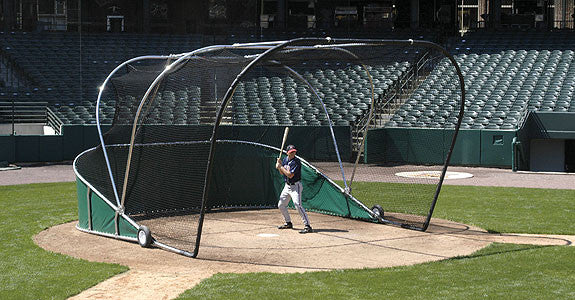In this time of having to stay home bound players are board and on the computer for many hours. But while I advocate for them getting outside and being active there certainly are some activities that they can do on that computer that will improve their mental knowledge of the game and maybe give them insight.
Here's a few that might work for you but please encourage your player and/or yourselves to look the sites using Google or any other search engine and specific questions.
Stay mentally sharp as well as physically getting ready for baseball and softball to start.
======================
http://www.freeonlinebaseballgames.com/
====================
Try this type activity while you are home safe.
Bucket Drill
by Randy Huff
(Darien, CT)
Coach sits on a bucket behind pitchers mound (Honey Hole). He will roll slow rollers to either SS or 2nd base.
The drill is designed to have the middle infielders roll a double play, with each player doing a little hop after they throw the ball to first base, signifying a runner sliding into them.
The coach gets to watch how the play unfolds, like watching how the fielders field the ball, flip or throw to 2nd base and watching the small hop after the ball is released.
The coach can have a lot of fun with the drill by putting the middle infielders on a stop watch to see who can do it the fastest, kids love the drill.
Then move bucket and coach by home plate and have players go to 3rd base. Have a coach on 3rd base as a runner.
Roll ball to the players at 3rd base, make sure they look the runner back before firing ball to 1st base. Then make sure 1st baseman catches ball for out and pops off base to look at home for the play.
If the player forgets to look coach back, have coach score from 3rd. This is all explained with less than 2 outs of course.
Dear Coach
I coach baseball at the 13-15 Babe Ruth level. We work hard with our pitchers holding runners on to avoid giving up really easy stolen bases. At this point, I think our pitchers are doing well at this task. I have a question or two about the second baseman and shortstop and their jobs of helping hold runners on at second base. I feel if we are going to give up a steal of third base, the runner that steals should at least be held on 2B properly before he earns that stolen base on us.
1) Are there different responsibilities for the two positions in regards to holding the runner at 2B vs. a left handed or right handed batter?
2) What should the footwork for the short stop and second baseman involve?
3) Should they be saying anything, tapping their gloves, or etc.?
Thanks for any tips you can offer me in regards to answering my questions.
==================================
Dear Kelly
You have this pretty well in hand and I answer that because of your suggestions and thoughts. The decision on who holes a runner at second with distractions, playing close to him, are all dependent upon the batter and where he's most likely at the ball. The general answer is whether he's left or right handed but there certainly can be exceptions as you get to know your opponents. There are several ways simply bluffing, going always a bag, living in front of the runner and backing away, moving up directly behind the runner so he knows you're there. All these things have to be done in synchronization with your pitcher so that you don't get caught out of place. Now your pitcher can help you with bluffs every once in a while, second and third looks (very is looks at the runner), pickoff plays even when there not successful which is second are pretty rare but they keep a record closer. But you are right you got to do a combination of things and you need to make sure a runner knows you're there otherwise he'll become very comfortable and get an extra step or two when the balls hit, we wants to steal, distracting your pitcher, so is a variation of what I've said and above what you said.
Coach Arnald Swift
We just came across to the new rule that's going into effect for the 2017 softball season at the NCAA level.
The dugout faces must be completely enclosed with netting or protective material all the way up to the roof line. This is for the player protection from foul balls, thrown equipment, thrown balls anything that could cause an injury entering the dugout.
I don't know that there been that many cases of injury, but there must've been something that precipitated this move and rules and move like this are not normally preventive their reactionary. I don't know what did it for my guess is there is one. Baseball and softball players are known for hanging on the dugout fence, being over it, even being outside of it and having to duck out of the way of balls flying in there.
I'm an umpire and have seen it along with being a coach for over 40 years so I don't know that it's a bad rule. The question I have for your comments is should all dugouts be protected from the ball getting into that dugout whether it be baseball, softball, no matter what the league.
I may be dating myself but I can remember dugouts that were ground-level and had no protection in front it was like sitting on a bench in a shed watching the games. Then the normal progression was to put up fences about 3 to 4 foot high to protect, then bring down lips from the top of the dugout have become standard. Now is this the evolution of dugout protection that's the question? Agree or disagree
Tip No.1: Don't Bunt With Two Strikes
This is a tough one when it fails. We have all seen it in youth baseball when the third baseman plays in close anticipating a bunt.
When the strike count gets to two, the coach will yell to the third baseman something like this: "Two strikes on the hitter. Move back so you are even with the base."
When the fielder moves back, depending on the ability of the batter, I love to give him another chance to bunt, given that the defense and opposing coach are sure the batter will not bunt. I have been successful with this and at other times it has failed.
One warning, if you try this. When your batter does fail, you will hear from all the "General Managers" in the bleachers.
More: 4 Biggest Mistakes Baseball Teams Make in Practice
Tip No.2: Catch Everything With Two Hands
I know most coaches and parents will hold me to task on this one. When my players are moving laterally reaching for a fly ball, I just want them to catch the ball any way possible.
I don't want my players thinking they have to catch everything with two hands if some catches are easier one-handed. If the shortstop is sprinting for a pop-up behind the third baseman, and has to reach for it, a one-handed catch works best.
When catching a pop-up hit right to a player, with little or no running, a two-handed catch works best. But too many coaches and parents overemphasize catching everything with two hands. Coaches need to have youth players practice catching balls with one and two hands.
Tip No.3: Don't Make the First or Third Out at Third Base
Tim McCarver won't invite me over to dinner on this one. I send my runner to third most of the time not worrying about how many outs we have.
I have my teams run the bases aggressively. We get thrown out at third and home more than other teams. But we also win more games than we lose.
More: Drill of the Week: Baseball Catching Drill for Kids
In youth baseball, every game has its share of wild pitches and passed balls. From my many years coaching third base I know that we have a great chance getting the runner home on a wild pitch or passed ball.
I hate ending the inning with a player who doesn't score from third base when some aggressive baserunning would have landed him on third and he would have scored.
Tip No.4: Bigger Baseball Gloves are Better
I was guilty of this when my oldest son played Little League. Every year I wanted to get him a bigger glove figuring the larger the glove, the better chance of the ball landing in the pocket. I was 100 percent wrong on this.
I remember going to Yankee Stadium with a close friend who had an "in" on everything and knew a lot of people. We had front row seats and before the game one of the Yankee infielders came over to say hello to my friend.
As they were talking, I could not keep my eyes off the player's glove and was amazed at how small the glove was. It just about outlined his hand.
I then learned that "glove control" is key for fielders. So, smaller rather than bigger gloves are better, especially for infielders, except the first baseman.
More: 5 Ways to Get Noticed at a Sports Camp
Tip No.5: Bat Your Best Hitter Third or Fourth
Years ago I remember in a few All-Star games, Willie Mays batted leadoff. I know the theory is that you get a couple of batters on base and the big guns will drive them in. I don't agree with this all the time.
I found that in youth baseball sometimes there is a large disparity with the talent of the players. Many times teams have one or two excellent players.
In youth baseball I prefer to bat my best hitter first or second. I cannot tell you how many times my team was down by a couple of runs in the last inning with the bottom of my batting order up.
If my best player batted third or fourth, I'd be doing everything I could to get him up but many times games ended up with my best hitter on deck. Now I like to bat my best player first or second. (I know you might think I'm sacrificing some runs but I love the idea of him getting an extra at bat a game.)
Like everything in coaching your talent at the moment will determine your move as the manager or coach. The term "thinking outside the box" has been overused in many instances.
But when coaching, you do want to think outside the box if it will give your players and team an advantage to succeed. Unpopular decisions may be the best decisions at the time you make them.
Marty Schupak










